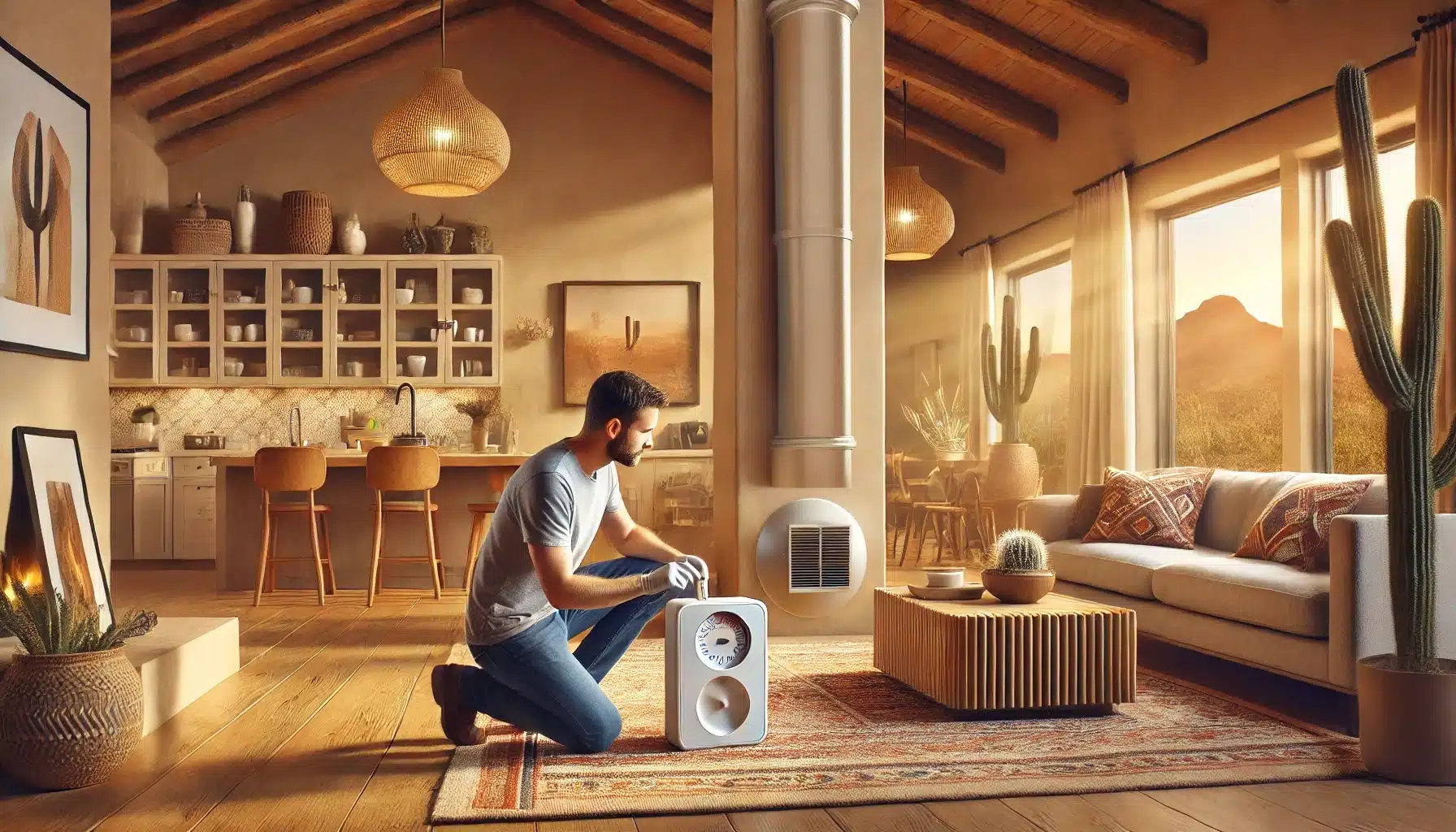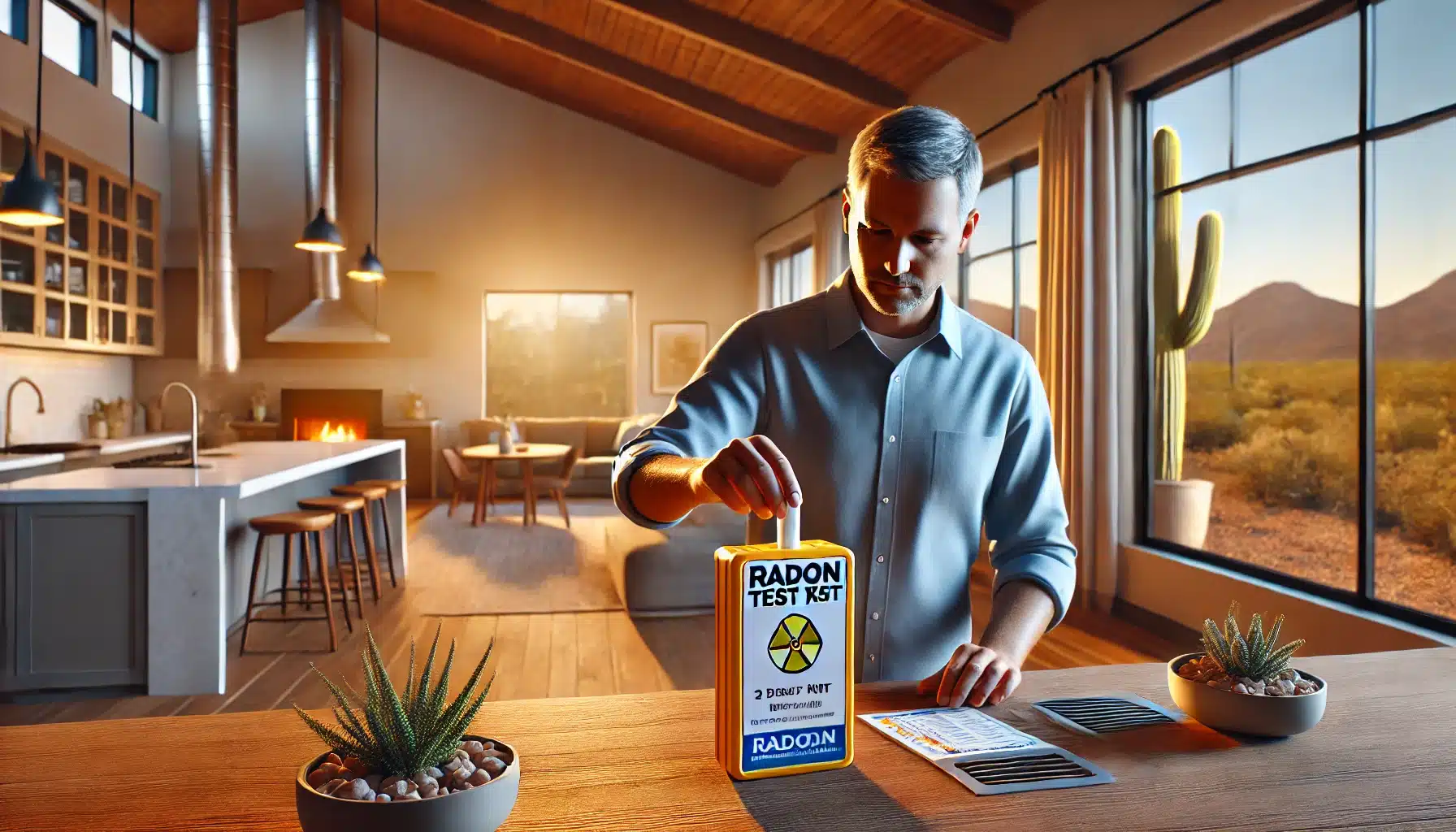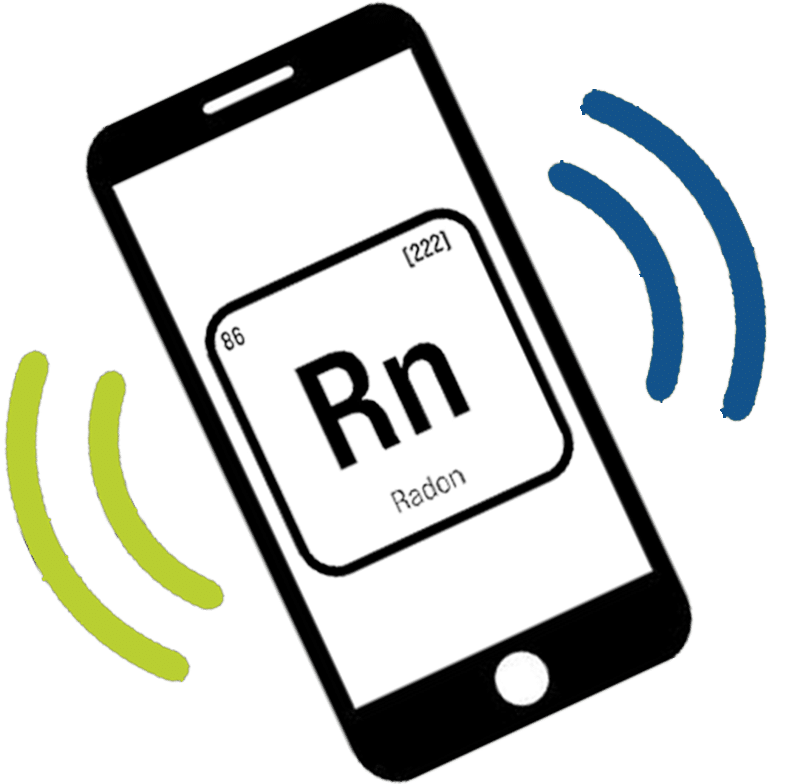Solved: Is Radon Common in Phoenix?
- Kaber Robinson

Radon is a radioactive gas that can seep into homes and pose serious health risks. Since radon is odorless, colorless, and tasteless, testing is the only way to detect its presence. Many Phoenix homeowners are unaware that one in 15 homes in Arizona has radon levels above 4.0 pCi/L, which is considered unsafe by the Environmental Protection Agency (EPA).
While Phoenix is classified as Zone 2 for radon risk, meaning moderate risk, some areas experience higher levels due to soil composition and construction practices. Understanding how radon enters homes and what steps to take can help homeowners reduce exposure and protect their health.
Key Takeaways
Radon is a concern in Phoenix, Arizona. It enters homes through foundation cracks, crawl spaces, and construction gaps.
Arizona’s natural soil composition contains elements that contribute to radon gas formation.
The EPA classifies Phoenix as a Radon Zone 2 city, meaning the city has a moderate risk of indoor radon exposure.
Testing is the only way to know if your home has radon. Homeowners can use DIY test kits or hire a professional.
The EPA recommends action if radon levels reach 4.0 pCi/L or higher. Even levels between 2.0 pCi/L and 4.0 pCi/L can pose health risks.
Radon is the second leading cause of lung cancer after smoking. Smokers and former smokers face the highest risk.
Free radon test kits are available from the Arizona Department of Health Services.

Why Is Radon a Problem in Phoenix?
Soil, geology, and construction influence radon levels in Phoenix. Some areas are more prone to buildup, making testing essential for homeowners.
Soil and Construction Differences
Radon levels vary widely across Phoenix due to soil composition and home construction differences. Homes built on granite-rich soil or near mountainous areas are at a higher risk. Older homes may also have more cracks and openings that allow radon to enter.
Arizona’s Natural Geology
Arizona’s natural rock and soil contain higher concentrations of uranium, which breaks down into radon gas. Areas with more granite, volcanic rock, and fractured bedrock release radon at a higher rate, increasing the risk of indoor buildup.
Radon Zone 2 Classification
The EPA classifies Phoenix as Zone 2, meaning it has moderate potential for radon exposure. However, testing has shown that some homes exceed the EPA’s action level of 4.0 pCi/L, making it important for all homeowners to test their indoor air quality.
Radon Levels in Phoenix
Radon concentrations in Phoenix vary based on geographic location, soil composition, and home foundation type.
| Zone Level | Risk Category | Average Indoor Radon Level | Areas in Phoenix |
|---|---|---|---|
| Zone 1 | High Risk | Above 4.0 pCi/L | North Phoenix, Cave Creek |
| Zone 2 | Moderate Risk | 2.0 – 4.0 pCi/L | Central Phoenix, Scottsdale |
| Zone 3 | Low Risk | Below 2.0 pCi/L | South Phoenix, Laveen |

How to Test Your Home for Radon
Radon is undetectable without testing. Homeowners can use DIY test kits or hire professionals to measure levels. Since radon levels fluctuate, regular testing helps ensure a safe indoor environment.
Radon Test Kits
Radon test kits are available at hardware stores, online retailers, and health departments. Homeowners can choose between:
Short-term test kits (2-7 days): Provide quick readings.
Long-term test kits (90+ days): Offer more accurate results over time.
Most test kits cost $15 to $25 and include lab fees. Free test kits are available from the Arizona Department of Health Services (.gov).
Hiring a Professional
For a more precise reading, homeowners can hire a certified radon professional to conduct in-depth testing and recommend mitigation strategies if needed.
“Testing is the only way to know if you and your family are at risk from radon.” – Kaber Robinson, Arizona Radon
What to Do If Your Home Has High Radon Levels
High radon levels can be managed with the right mitigation techniques. Whether through professional services or home improvements, reducing radon exposure helps create a safer living environment. Understanding available options ensures homeowners take the necessary steps to protect their health.
Take Action If Levels Are High
The EPA recommends mitigation if radon levels reach 4.0 pCi/L or higher. However, even levels between 2.0 pCi/L and 4.0 pCi/L can pose health risks, so homeowners should consider taking action at lower readings.
Professional Radon Mitigation
Professional radon mitigation can lower indoor radon levels by up to 99% using systems that remove radon before it builds up inside.
Sub-slab depressurization: A system of pipes and fans draws radon gas from beneath the home and vents it outside.
Sealing foundation cracks: Helps limit radon entry.
Ventilation improvements: Increasing airflow in crawl spaces and basements reduces radon accumulation.
Continuous monitoring: Radon detectors track changes in gas levels over time.

Why Is Radon a Health Risk?
Radon is the second leading cause of lung cancer in the U.S. after smoking. It is estimated to cause 21,000 lung cancer deaths per year per the CDC.
Who Is Most at Risk?
Smokers and former smokers face a significantly higher risk of lung cancer when exposed to radon.
People with pre-existing lung conditions may experience worsened symptoms.
Long-term exposure increases the likelihood of developing lung cancer, even at lower radon levels.
“Radon-related lung cancer is preventable, but only if people take action early.” – Kaber Robinson, Arizona Radon
Radon-Resistant Construction in New Homes
Modern homes in Phoenix are now being built with radon-resistant features to reduce gas buildup.
Common Radon-Resistant Features
Vapor barriers: Thick plastic sheets prevent radon from seeping through the foundation.
Sealed foundations: Reduces gas entry points.
Passive radon vent pipes: Direct radon gas outdoors before it accumulates inside.
Radon monitoring systems: Track gas levels in real-time.
One in 15 Arizona homes has high radon levels, making these building features essential for new construction. ADHS
Conclusion
Radon is present in many Phoenix homes, with some areas testing higher than others. Testing is the only way to know if your home is at risk.
Steps to Protect Your Home
Test your home at least twice a year, especially in high-risk areas like North Phoenix and Paradise Valley.
Monitor symptoms like chronic cough, shortness of breath, and chest tightness, which may indicate radon exposure.
Seek professional radon mitigation if levels exceed 4.0 pCi/L.
Ensure new homes have radon-resistant features like sealed foundations and ventilation systems.
By testing regularly and taking action, Phoenix homeowners can reduce their risk of radon exposure and protect their long-term health.

Bio:
Kaber Robinson, a second-generation radon mitigator and the founder of Arizona Radon, has accumulated 30 years of experience in the industry. A nationally certified radon measurement and mitigation professional, Kaber’s commitment to health and environmental sustainability led him to the radon field after graduating from a renowned technical college in Kansas.
Gaining invaluable experience with a leading radon mitigation company in the United States, he traveled extensively to install systems across various environments. Today, Kaber applies his extensive knowledge and practical skills at Arizona Radon, where he ensures that each project adheres to the strictest standards of quality and safety.




